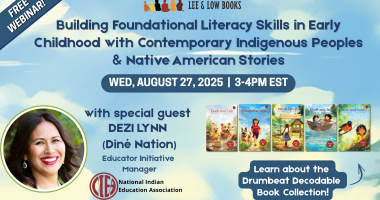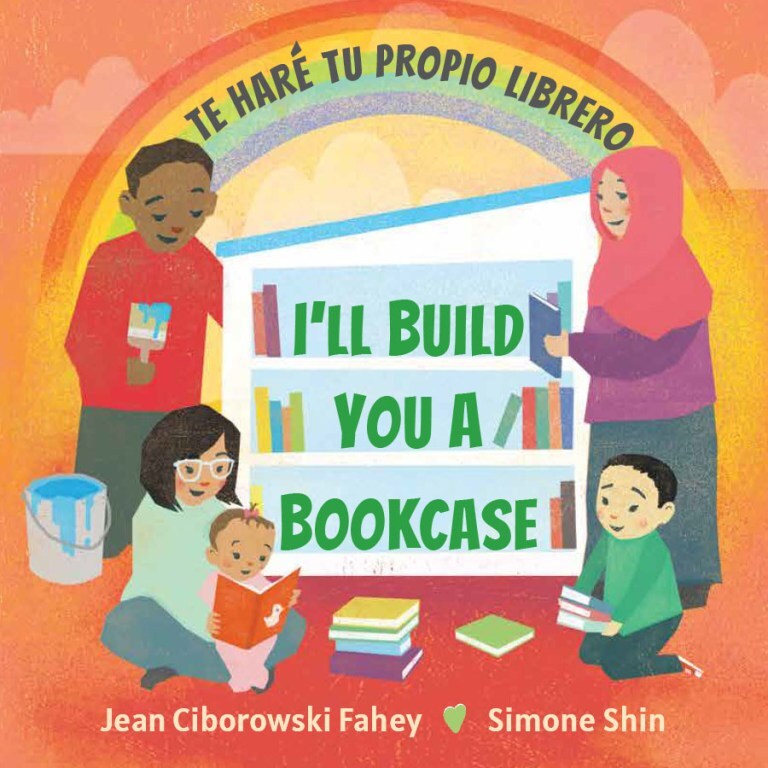In this guest post,I’ll Build You a Bookcase author Dr. Jean Ciborowski Fahey shares practical strategies for caregivers embarking on their literacy journey with their little one.
When it comes to baby-literacy, the biggest challenge facing parents of our very youngest children is making the time for face-to-face and skin-to-skin and being present with our children.
Why should we read to our babies starting in infancy?
A sports metaphor best reflects an infant’s ability to engage with others. Infants take turns by initiating an interaction (serve) and respond to a conversation (return) with the most important people in their life.
Watch this six-minute video of “Serve and Return” in action from the Center on the Developing Child at Harvard University.
When babies and caregivers are interacting (i.e., as in reading) two important things happen:
- The relationship between baby and caregiver deepens.
- This bond facilitates the baby’s desire to not only listen for the rhythm and patterns of the language, but also to study what word-sounds look like on their caregiver’s mouth (Read: Infants deploy selective attention to the mouth of the talking face when learning speech, Proceedings of the National Academy of Sciences).
Like a diligent student attending to homework, babies are collecting important data from their parents so that the neural pathways for language (and later literacy) among their brain cells form and strengthen. When provided with a loving and language-rich environment, these neural pathways will experience astounding growth and will triple in number during the child’s first few years!
What does a realistic, successful reading session with a baby look like?
A realistic, successful reading session is:
- optimally with a physical book (as opposed to screens)
- baby is positioned to look at the caregiver’s face from the lap, from their tummy or from baby’s back
- Includes repetition and rhyming because they are listening (and looking) for the parts and patterns of the language spoken by the important people around them
I highly recommend checking out this infographic from Reach Out and Read which illustrates the milestones of early literacy development from birth to age 5. Here you will see what a child can do at each age and what parents can do to further engage and support them in literacy.
How big a priority should reading be for under age 1?
A baby’s brain rapidly grows in the first three years, according to The Urban Child Institute. Parents and caregivers have an enormous opportunity to stimulate infants at birth, beginning with reading. While the infant cannot understand the meaning of words, “the serve and return” principle tells us the baby has a strong need to communicate and an equally strong need for responsive parenting.
In the beginning of an infant’s life, reading can be a signal to the baby that face-to-face and skin-to-skin togetherness is coming – all the while reinforcing the parts and patterns of the child’s language(s).The science is clear: start reading, talking and singing early, as early as birth. The wiring of your baby’s reading brain is depending upon you!
We don’t have a set reading routine. Won’t kindergarten handle this?
Babies and young toddlers love routines. Routines help babies and toddlers make sense of their world by helping them predict what’s ahead. Reading routines can occur “in the soft morning light and books we will read before saying goodnight” (page 2 in I’ll Build You a Bookcase) as well as nap time.
When my own child was fussy, I would place her in the highchair with a handful of cereal, pull up a chair to get close and read to her. The other advantage of a reading routine is the more we read to young children before they can talk and walk, the more language they will hear. Hearing more language means learning more words. And learning more words before one can read will help children once they begin to read. Reading early also helps young children develop their attention and listening, skills that will help them throughout their lives.
Learn more about I’ll Build You a Bookcasehere.
About the project: In a groundbreaking initiative funded by the William Penn Foundation, OpenIDEO launched the Early Childhood Book Challenge in 2019 seeking an original story for children ages 0 to 3 that would inspire children and their caregivers to read together. Author Jean Ciborowski Fahey’s winning manuscript was selected by a committee of literacy and family engagement experts. With support from the William Penn Foundation, 25,000 copies will be distributed for free to Philadelphia families with young children, including through Reach Out and Read.
Read the latest: Philly is a force behind a new book that helps infants and adults from The Philadelphia Inquirer.

Dr. Jean Ciborowski Fahey is an author, parent educator, and speaker dedicated to promoting an early love of reading in children. She also consults for a variety of literacy initiatives and organizations and creates home literacy curriculum for parent-home visitors and early intervention specialists. She lives in Massachusetts. Visit her online at readingfarm.net.









